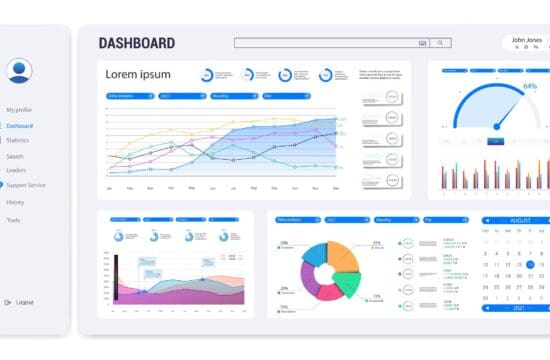Inventorize personal information with data mapping and meet compliance requirements
Organizations have numerous data sources spread across their IT landscape, which they use to collect, store, and process their customers’s data. Typically, organizations rely on multiple data sources located in different destinations, and it becomes difficult for them to perform data analytics since it is not centralized.
Another issue they face is staying compliant with data privacy laws because they lack the ability to map their data, which results in mishandling of data and data breaches. Such challenges give rise to diminishing customer trust and noncompliance with laws that ultimately affect the reputation of an organization.
The solution to this is data mapping to not just stay compliant with privacy programs but also be aware of what type of data resides in which data system.
In this blog, we will take a detailed look at what is data mapping and what are the basics of it so that you can implement it in your organization.
Understanding what is data mapping in the context of data privacy
From a data privacy perspective, data mapping is the process of inventorying personal data so that an organization has high-level clarity about what they have collected, how they process it, and with whom they share it. Understanding how data moves through the organization is an important step to identify risks associated while processing personal data and compliance obligations to implement privacy controls.
The process of data mapping involves identifying and integrating data sources, data fields, data systems, data warehouses, etc., and visualizing it all in a single view. An organization will be then able to track down create and maintain Records of Processing Activities (RoPA), and identify data processing activities to comply with data laws.
How can an organization carryout data mapping
- Identify data sources – Identify all sources and types of data that resides within an organization so that you can uphold accurate data to include in the process.
- Classify and map data – Data classification helps organizations understand where sensitive data is stored, who has access to it, and how it is being processed. Matching source data fields to destination data fields creates alignment and prevents data bottlenecks.
- Document data elements – Create an inventory of all the data elements, such as data sources, data fields, data systems, data warehouses, etc., to determine the purpose of processing, data retention periods, and data privacy measures.
- Analyze risks and perform assessment – Once all the data elements are identified, you need to review the risks by performing a privacy risk assessment to identify potential risks related to the collected data.
- Implement controls and continuous monitoring – Based on the risk assessment, implement the appropriate governance controls for data accuracy, security, and compliance. Data maps require constant maintenance, and so organizations need to periodically update and review data maps as new data sources or processing activities are introduced.
Data mapping techniques
Manual data mapping
The first thing to know about manual data mapping is that it is time-consuming, completely human-driven, and prone to errors. Having said that, it is the best option for organizations that lack the financial strength to invest in automation tools and software. Another advantage of manual data mapping is that, due to human intervention, the maps can be fully customized and the final product can be granularly controlled. Lastly, this technique requires advanced skills, and most businesses prefer to invest in automated tools rather than people.
Semi-automated data mapping
Also known as schema-mapping, this particular technique leverages an automated tool to establish a relationship between a data source and the target schema. A person will use a tool to define data fields and combine those that are similar to create schemas. The rest of the process is manual, as the person responsible needs to make adjustments to the script or code to complete the actual data conversation.
Automated data mapping
Automated data mapping offers organizations the ability to map, label, and process large volumes of data by eliminating the need for coding. Automation also leads to zero human errors and provides efficiencies through powerful app integrations and centralized data view.
Data Mapping Best Practices
- Define the purpose – Clarify why your organization thinks data mapping is necessary and what objectives they are trying to achieve. The leadership should be completely behind this to effectively meet the end goals.
- Identify sensitive data – Identify all the sensitive data stored across your entire data estate to accurately map it and meet compliance requirements.
- Identify risks and ensure security – As data breaches continue to haunt Data Protection Officers (DPO), identify the data sources that lack security and provide the right access controls integration process to avoid data loss in any way.
- Implement automation – Leverage a data mapping tool that will help your organization discover and inventorize all the data in one location. As the number of fields, systems, and databases grows, so does the need for automation.
- Monitor and maintenance – As data and privacy regulations evolve, you need to continuously perform regular maintenance. Debugging and making tweaks to the code to better suit your business will ensure everything is running as it should.
Gain control of your data with Secuvy’s AI-powered platform and proactively manage risks
Data mapping is the foundation of effective data governance and compliance. Secuvy provides you the right platform to streamline data management and achieve transparency to harness the power of your data.
The contextual data discovery feature lets you discover, catalog, and secure all data attributes and metadata across your data sources located on Prem, in the cloud, or in a hybrid environment. You can not only automate the discovery process, but with our self-learning AI, you can scan all the data sources to identify Personal Identifiable Information (PII) and Protected Health Information (PHI). Once you know your data, you can prioritize high-risk and sensitive data to take the most appropriate security actions.
As you add new data or data assets to your IT landscape, our platform continuously updates graphs with new entities and data input to keep you up-to-date for accurate decision-making. Data mapping might sound difficult, but we have simplified it, and our platform helps you find, categorize, and map all your data to get real-time insights and fulfill compliance requirements.
























